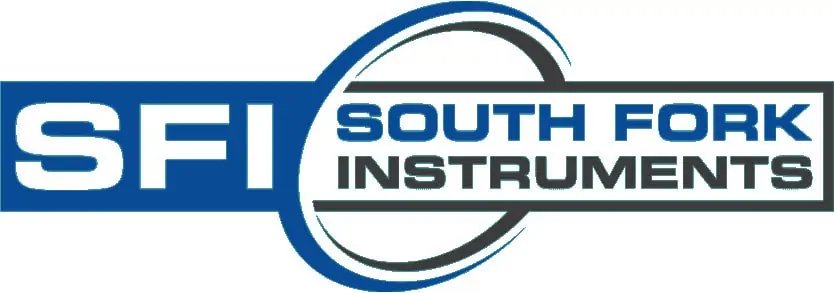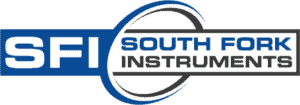Overview:
Foam control in food processing rarely gets the same attention as other process variables. But in vegetable washing lines and effluent tanks, overlooking it can be extremely costly. From lost product to overspill cleanups, unmonitored foam is a recurring source of waste.
Why Foam Builds Up During Processing
Vegetable washing and wastewater treatment tanks are common sources of foaming in food facilities. When fresh produce is washed, especially during peak harvest season, the mix of organic matter, detergents, and high turbulence often produces foam. The same is true in effluent tanks downstream, where waste from washing and processing collects.
Foam formation is inconsistent. It varies by product type, batch load, washwater condition, and temperature. Carrots and peas may generate more foam than brassicas. Recycled washwater with higher organic content typically produces thicker foam. That variability makes foam difficult to manage with fixed systems or by manual observation.
Uncontrolled foam can:
- Cause tank overflows and product loss
- Create safety hazards from spills
- Trigger environmental compliance issues
- Require labor-intensive cleanups
Yet unlike flow rate, temperature, or pH, foam is not commonly measured or trended in many facilities.
Common Foam Control Methods Fall Short
The standard approach to foam control in food processing is dosing antifoam chemicals, either on a fixed schedule or as needed based on visual observation. These methods work to a point, but they introduce their own problems:
- Wasted chemicals: Dosing on a timer means chemicals are added whether foam is present or not. Overuse significantly increases costs.
- Reactive response: Foam events may go unnoticed until there is visible overspill. Cleanup is already underway before adjustments are made.
- Inconsistent results: Foam changes by batch and by tank. Manual dosing can’t always keep up.
According to case study data from Hycontrol, a European cereal manufacturer reduced antifoam use by 92% after implementing a measurement-based system on an effluent tank. Annual savings totaled £30,000 (~$35,000), and the customer noted the system “paid for itself several times over.”
Why Measurement Matters in Foam Control
One reason foam tends to be overlooked is that it’s difficult to measure. Foam is typically about 1% liquid and 99% air, with the liquid forming the thin films that the bubbles are made of. Measurement attempts using conventional level sensors—which are designed to detect liquids—struggle to provide reliable readings.
Liquid level probes often produce incorrect indication due to residue buildup. In food processing, such sensors quickly become coated with product and foam scum, creating a false positive for foam presence and triggering anti-foam chemical overdosing.
Even non-contact level gauges (such as radar) that avoid fouling, can prove to be unreliable. They often fail to distinguish between the surface of the foam layer and the liquid beneath it and therefore under-report, allowing foam to become an issue unchecked.
SureSense+: Designed Specifically for Foam Measurement
South Fork Instruments supplies the Hycontrol SureSense+ system, which was purpose-built to overcome the limitations of traditional foam detection methods. Rather than adapting existing liquid level sensors, SureSense+ was designed from the ground up to work with foam.
At the core of the system is IMA (Intelligent Multi-Action) sensing, which allows the probe to distinguish between real foam activity and fouling on the sensor. Foam deposits and organic buildup are common in vegetable washing and effluent systems, but the SureSense+ continues to read accurately even when the sensor is heavily coated.
Key features of SureSense+ include:
- Dedicated foam and foam-liquid interface detection
- Robust performance in high-fouling environments
- Fully configurable dosing outputs
- Resistant to interference from cleaning agents and CIP residue
The system can integrate with existing dosing setups to directly control antifoam pumps based on live foam levels. This allows processors to dose only when needed, avoiding overuse of chemicals and preventing unexpected foam surges.
Facilities using SureSense+ have reported measurable improvements in process stability and cost control. Whether installed in open flume tanks, closed effluent vessels, or fermentation units, the system adapts to variable conditions and provides repeatable data.
Real-World Foam Control in Vegetable Washing
A second Hycontrol case study involves Pinguin Foods, a processor of frozen vegetables in the UK. The site washes large volumes of carrots, beans, and peas before freezing. Depending on the crop and washwater condition, foam levels can change dramatically from one shift to the next.
Originally, their system used timer-based dosing which worked during high-foam periods but wasted chemicals when foam was minimal. It also failed to prevent sudden foam surges that led to spills.
Engineers switched to a foam measurement-based system, using SureSense probes located in the flume tanks. The upgrade enabled real-time antifoam dosing only when needed. As a result, chemical usage dropped, spills were avoided, and manual intervention was reduced.
A Pinguin Project Engineer explained: “Controlling foam is a major concern for us especially for products such as peas and carrots. The CCL system, incorporating the special Hycontrol sensors, provides highly efficient foam control under wide-ranging conditions and minimizes our use of expensive anti-foaming agents.”
Applications of Foam Control in Food Processing
Foam detection systems are not limited to one type of process. They are used wherever foam appears unpredictably and interferes with operations. In food processing, the most common applications include:
- Vegetable washing flumes: High turbulence and organic matter make foaming likely.
- Effluent treatment tanks: Foam can trigger overflows and complicate compliance.
- Fermentation vessels: Foam buildup can disrupt gas exchange and yield.
- Cleaning-in-place systems: Residual detergents and agitation create excess foam.
In each case, measurement-based control helps avoid overdosing chemicals and reducing both costs and unplanned downtime. A reliable sensor system provides data that operators can use to refine cleaning cycles, optimize chemical use, and maintain safety.
Contact South Fork Instruments About Foam Control Solutions
To discuss a foam measurement solution tailored to your process, contact South Fork Instruments today to get started. You can also visit our foam control pages on Automated Foam Detection and Hycontrol Foam Detection & Foam Control Systems for more information on our capabilities.
Read More

